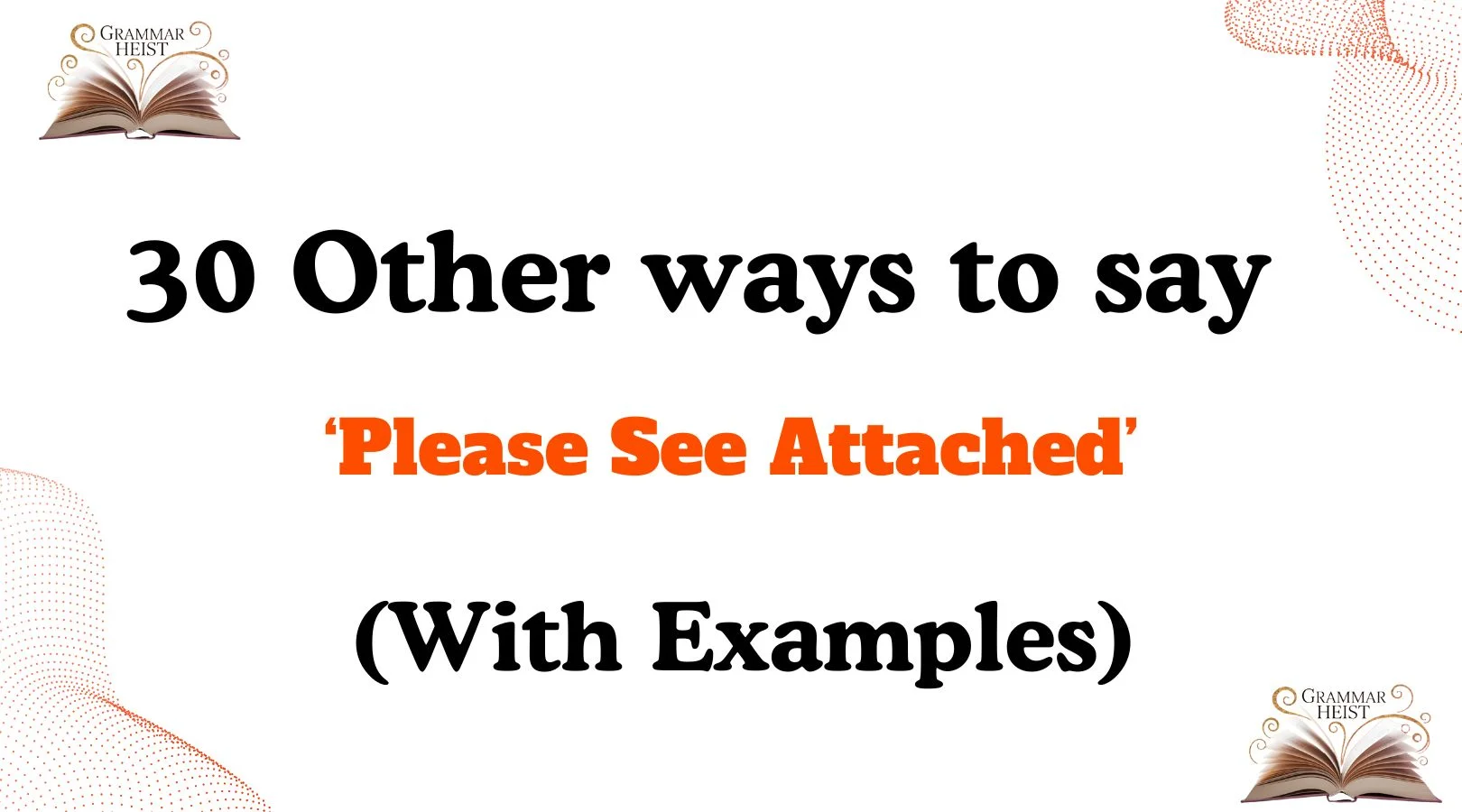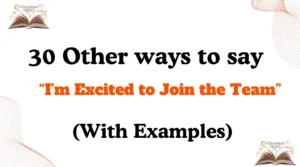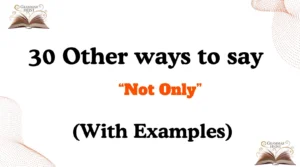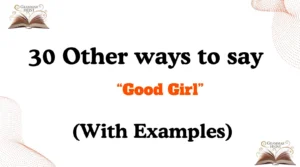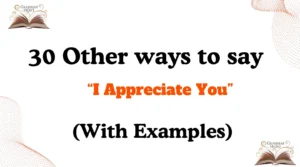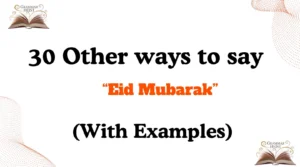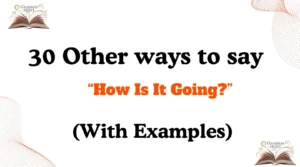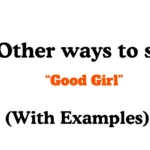Finding the right words in professional communication can make a simple message feel more personal and thoughtful. The phrase “please see attached” is clear and direct, but sometimes it can sound a little too formal or robotic. By using warm, considerate alternatives, you can keep your message professional while also sounding more approachable, caring, and engaging. Below, you’ll discover 30 other ways to say “please see attached”—complete with examples and explanations—to help you connect more effectively.
What Does “Please See Attached” Mean?
The phrase “please see attached” is a polite way of telling someone that a file, document, or image has been included in the email. It’s short, functional, and easy to understand.
Is It Professional/Polite to Say “Please See Attached”?
Yes, it’s professional and polite. However, it can sometimes sound overused or stiff. Using alternatives allows you to adapt your tone—whether you want to sound formal, friendly, or caring.
Pros or Cons
Pros:
- Simple and universally understood
- Works in formal emails
- Quick and efficient
Cons:
- Can sound impersonal
- May lack warmth or personalization
- Overly repetitive in frequent communication
Synonyms For “Please See Attached”
- I’ve attached [document] for your reference
- Please find attached [file]
- Attached is [document] for your review
- Here’s [file] for you
- Kindly see the attached [file]
- I’m sharing [document] with you as an attachment
- The attached [file] contains the details
- Attached for your convenience
- Please review the attached [document]
- I’ve included [file] as an attachment
- You’ll find [file] attached
- Attached herewith [file]
- For your perusal, I’ve attached [file]
- Here’s the [file] you requested
- Please see the enclosed [file]
- I’m attaching [file] for your use
- Please access the attached [document]
- Enclosed for your review
- The [file] is attached below
- As requested, I’ve attached [file]
- Here’s the document attached for your convenience
- The following file is attached
- I’ve included the [file] below
- Attached are the documents you’ll need
- I’ve added [file] as an attachment
- You’ll see the attached [file]
- I’ve provided [file] as an attachment
- Attached here is [file]
- The attached [document] should help
- Here is the requested [file] attached
1. I’ve attached [document] for your reference
Scenario: When sending supporting documents for clarity.
Examples:
- I’ve attached the report for your reference.
- I’ve attached the slides for your review.
- I’ve attached the proposal for your input.
Tone: Polite and professional.
Explanation: Makes it clear you’re sending the document for them to look at, while sounding warm.
2. Please find attached [file]
Scenario: Formal communication to clients or seniors.
Examples:
- Please find attached the updated invoice.
- Please find attached the meeting agenda.
- Please find attached the performance summary.
Tone: Formal, polite.
Explanation: A traditional and respectful way to indicate attachments.
3. Attached is [document] for your review
Scenario: Sharing a document for feedback.
Examples:
- Attached is the draft policy for your review.
- Attached is the outline for your comments.
- Attached is the timeline for your approval.
Tone: Neutral-professional.
Explanation: Keeps the focus on the purpose of the file.
4. Here’s [file] for you
Scenario: Friendly communication with colleagues.
Examples:
- Here’s the presentation for you.
- Here’s the summary for your review.
- Here’s the checklist for you to use.
Tone: Warm, approachable.
Explanation: Sounds less formal and more conversational.
5. Kindly see the attached [file]
Scenario: Respectful tone with clients or managers.
Examples:
- Kindly see the attached contract.
- Kindly see the attached summary notes.
- Kindly see the attached letter.
Tone: Polite, deferential.
Explanation: Adds courtesy by using “kindly.”
6. I’m sharing [document] with you as an attachment
Scenario: Emphasizing sharing information.
Examples:
- I’m sharing the updated plan with you as an attachment.
- I’m sharing the data sheet attached below.
- I’m sharing the agenda with you attached here.
Tone: Friendly, collaborative.
Explanation: Focuses on collaboration and sharing.
7. The attached [file] contains the details
Scenario: When the file is the main source of details.
Examples:
- The attached PDF contains the details.
- The attached sheet contains the full breakdown.
- The attached report contains all the numbers.
Tone: Informative and clear.
Explanation: Directs attention to the file as the source.
8. Attached for your convenience
Scenario: When making things easier for the recipient.
Examples:
- Attached for your convenience is the updated chart.
- Attached for your convenience is the draft outline.
- Attached for your convenience is the travel schedule.
Tone: Helpful and supportive.
Explanation: Shows consideration for the reader’s ease.
9. Please review the attached [document]
Scenario: Asking for feedback.
Examples:
- Please review the attached draft.
- Please review the attached proposal.
- Please review the attached strategy.
Tone: Professional, direct.
Explanation: Clear and goal-oriented.
10. I’ve included [file] as an attachment
Scenario: Friendly yet professional communication.
Examples:
- I’ve included the report as an attachment.
- I’ve included the outline as an attachment.
- I’ve included the form as an attachment.
Tone: Neutral, professional.
Explanation: A casual but clear phrasing.
11. You’ll find [file] attached
Scenario: Neutral and professional, works in any business setting.
Examples:
- You’ll find the report attached.
- You’ll find the latest design mockup attached.
- You’ll find the final agenda attached.
Tone: Polite, straightforward.
Explanation: Puts focus on the recipient’s discovery of the file.
12. Attached herewith [file]
Scenario: Traditional/formal business emails.
Examples:
- Attached herewith the signed agreement.
- Attached herewith the updated terms.
- Attached herewith the official memo.
Tone: Very formal, traditional.
Explanation: Common in older/formal business contexts; may sound stiff in casual communication.
13. For your perusal, I’ve attached [file]
Scenario: Sending something to be carefully reviewed.
Examples:
- For your perusal, I’ve attached the full report.
- For your perusal, I’ve attached the annual budget file.
- For your perusal, I’ve attached the updated contract.
Tone: Formal, respectful.
Explanation: “Perusal” signals thoughtful reading or review.
14. Here’s the [file] you requested
Scenario: Replying to a request.
Examples:
- Here’s the brochure you requested.
- Here’s the updated document you asked for.
- Here’s the proposal draft you needed.
Tone: Helpful and responsive.
Explanation: Shows attentiveness and willingness to assist.
15. Please see the enclosed [file]
Scenario: Often used in both emails and letters.
Examples:
- Please see the enclosed report for details.
- Please see the enclosed document for clarification.
- Please see the enclosed copy of the agreement.
Tone: Formal, polite.
Explanation: “Enclosed” is slightly old-fashioned but still professional.
16. I’m attaching [file] for your use
Scenario: When the file will help the recipient accomplish something.
Examples:
- I’m attaching the template for your use.
- I’m attaching the guide for your convenience.
- I’m attaching the draft for your editing.
Tone: Helpful and thoughtful.
Explanation: Emphasizes practicality and usefulness.
17. Please access the attached [document]
Scenario: Slightly more formal and directive.
Examples:
- Please access the attached spreadsheet.
- Please access the attached agreement.
- Please access the attached notes for more context.
Tone: Professional, respectful.
Explanation: Suggests the file contains important content requiring attention.
18. Enclosed for your review
Scenario: Sending official materials.
Examples:
- Enclosed for your review is the quarterly report.
- Enclosed for your review is the final design draft.
- Enclosed for your review is the agreement.
Tone: Formal and polished.
Explanation: Strong in business or legal communication.
19. The [file] is attached below
Scenario: Very straightforward, casual or semi-formal emails.
Examples:
- The report is attached below.
- The invoice is attached below.
- The summary is attached below.
Tone: Neutral, clear.
Explanation: Keeps things very simple and easy to follow.
Read More:30 Other Ways to Say ‘I Would Love To’ (With Examples)
20. As requested, I’ve attached [file]
Scenario: Following up on a direct ask.
Examples:
- As requested, I’ve attached the presentation slides.
- As requested, I’ve attached the form.
- As requested, I’ve attached the notes.
Tone: Professional and courteous.
Explanation: Signals responsiveness and respect for the recipient’s request.
21. Here’s the document attached for your convenience
Scenario: Sending something that makes their work easier.
Examples:
- Here’s the guide attached for your convenience.
- Here’s the full agenda attached for your convenience.
- Here’s the breakdown attached for your convenience.
Tone: Friendly, considerate.
Explanation: Adds warmth by focusing on the recipient’s ease.
22. The following file is attached
Scenario: Simple and clear, often in formal work contexts.
Examples:
- The following file is attached: invoice #345.
- The following file is attached: draft presentation.
- The following file is attached: summary sheet.
Tone: Neutral, direct.
Explanation: Useful when multiple files or specifics need to be listed.
23. I’ve included the [file] below
Scenario: Informal, friendly tone.
Examples:
- I’ve included the report below.
- I’ve included the updated checklist below.
- I’ve included the details below.
Tone: Casual but clear.
Explanation: Suggests a natural, conversational tone.
24. Attached are the documents you’ll need
Scenario: Sharing required materials.
Examples:
- Attached are the documents you’ll need for the meeting.
- Attached are the resources you’ll need for the project.
- Attached are the forms you’ll need to submit.
Tone: Supportive, practical.
Explanation: Direct and recipient-focused.
25. I’ve added [file] as an attachment
Scenario: Informal and straightforward.
Examples:
- I’ve added the guide as an attachment.
- I’ve added the proposal as an attachment.
- I’ve added the invoice as an attachment.
Tone: Neutral, casual-professional.
Explanation: Simple and collaborative wording.
26. You’ll see the attached [file]
Scenario: Direct but polite.
Examples:
- You’ll see the attached summary.
- You’ll see the attached chart.
- You’ll see the attached updated form.
Tone: Professional and clear.
Explanation: Encourages the reader to “see” rather than just “check.”
27. I’ve provided [file] as an attachment
Scenario: When offering helpful resources.
Examples:
- I’ve provided the updated timeline as an attachment.
- I’ve provided the report as an attachment.
- I’ve provided the checklist as an attachment.
Tone: Helpful and supportive.
Explanation: Highlights generosity and thoughtfulness.
28. Attached here is [file]
Scenario: Neutral and very common phrasing.
Examples:
- Attached here is the updated draft.
- Attached here is the final report.
- Attached here is the checklist.
Tone: Neutral, clear.
Explanation: Works in nearly all professional settings.
29. The attached [document] should help
Scenario: Offering something useful or clarifying.
Examples:
- The attached notes should help.
- The attached chart should help explain the numbers.
- The attached guide should help with setup.
Tone: Friendly, supportive.
Explanation: Adds care by suggesting the file is meant to assist.
30. Here is the requested [file] attached
Scenario: Following up on someone’s needs.
Examples:
- Here is the requested proposal attached.
- Here is the requested agreement attached.
- Here is the requested report attached.
Tone: Polite, professional.
Explanation: Combines responsiveness with clear delivery.
Conclusion
Using alternatives to “please see attached” allows you to adjust your tone depending on the situation—whether you need to sound formal, thoughtful, or friendly. Small wording changes can make your communication feel more empathetic, professional, and approachable, helping your message stand out as caring rather than generic.

Mia Rose is a skilled language expert with a deep passion for helping individuals master the art of writing and communication. With years of experience in the field, Marie brings a thoughtful and tailored approach to grammar, style, and language improvement. Her goal is to empower others to express themselves with clarity, precision, and confidence in every written word.
